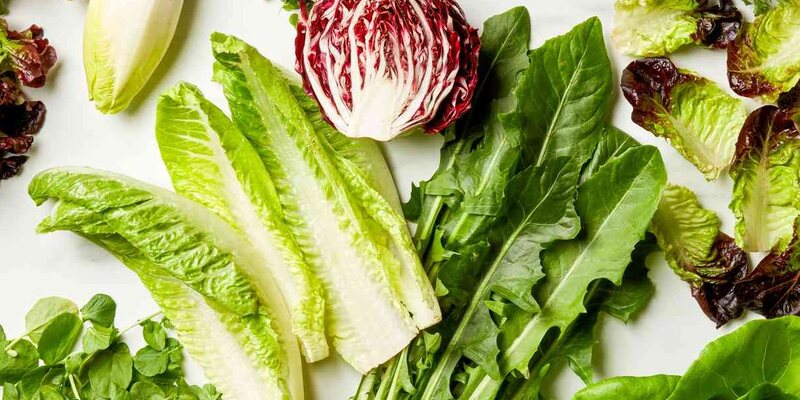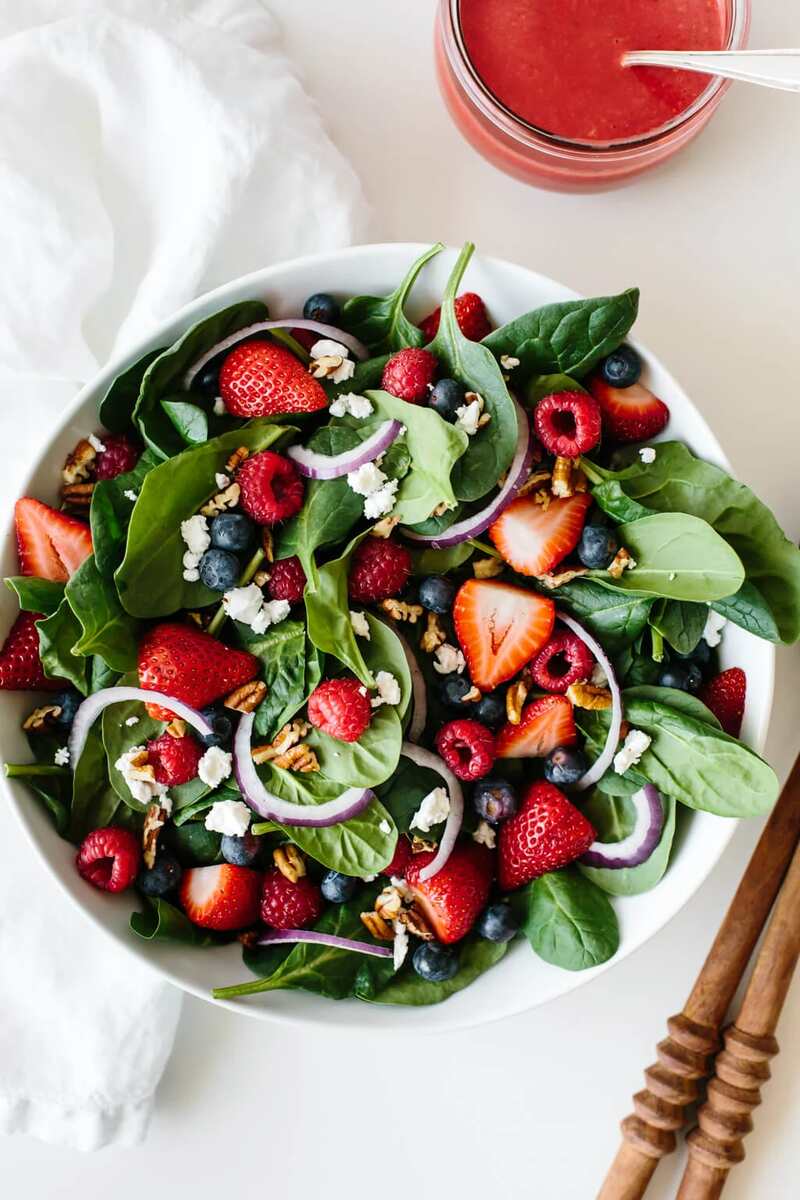Recognizing salads as a powerhouse of nutrients and acknowledging their plethora of health benefits have been longstanding. Nevertheless, all salad greens do not receive equal recognition. This comprehensive guide immerses us in the realm of healthy eating by meticulously ranking nutrient-rich vegetables from best to worst. Understanding the nutritional content of your greens is crucial, whether you're a seasoned salad enthusiast or just beginning to embrace a healthier lifestyle.

The Importance of Green Salads
The leafy greens often determine a salad's nutritional value. These vegetables constitute the foundation of a diet rich in nutrients, brimming with vitamins, minerals, and antioxidants. We will delve into the salad greens spectrum, evaluating each variety's unique benefits and limitations; this exploration aims to steer you towards choices that are both healthier and more delightful.
1. Kale - The Undisputed Superfood
Our list places Kale, the undefeated champion of nutrient-rich greens, in the top spot.
Loaded with vitamins A, K, and C, kale is a nutritional powerhouse. Its high fiber content promotes digestive health, and the abundance of antioxidants fosters overall well-being. Not only does incorporating kale into your salads enhance flavor but it also elevates the dish's nutritional profile. Curly or Lacinato will add a delightful crunch to your salads.
The popularity of Curly Kale stems from its ruffled leaves making it a favorite choice. Its richness in iron and calcium enhances the texture of salads and promotes bone health.
Dinosaur kale, also known as Lacinato, boasts a darker hue and an earthy flavor. It serves as an excellent source of vitamins A and K, promoting skin health while aiding in blood clotting.
2. Spinach - A Classic Nutrient Boost
Securing its place as a nutritional heavyweight, spinach is a versatile, mild-flavored green. It boasts numerous benefits such as an abundance of vitamins and minerals, high levels of antioxidants, and impressive folate content.
Spinach, a leafy green abundant in iron, stands as an excellent natural option for individuals looking to enrich their iron levels. Its copious folate content proves particularly advantageous to pregnant women by bolstering fetal development. Introduce spinach into your salads. Its mild taste harmonizes superbly with numerous other ingredients.
The tender, mild baby spinach leaves serve as an ideal base for salads. Packed with vitamins and minerals, they bolster overall health without overpowering other flavors.
With its crinkled leaves, Savoy spinach adds a delightful texture. This variety presents a unique flavor profile, an excellent source of heart-healthy promoting antioxidants.
3. Arugula - Peppery Perfection

With its peppery bite, arugula imparts a distinct flavor to salads. It also provides numerous health benefits.
Rich in phytochemicals renowned for their anti-carcinogenic properties, this leafy green also harbors nitrates that bolster cardiovascular health. With its bold taste, infusing salads with depth and complexity, arugula elevates simple dishes into an all-encompassing culinary experience.
Those seeking a more robust taste often favor wild arugula, distinguished by its smaller leaves and intense flavor. It harmonizes particularly well with citrusy dressings, as well as fruits.
Opt for a milder option like baby arugula. The tender leaves of this versatile choice impart a subtle, peppery kick, enhancing the salad without dominating its overall flavor.
4. Romaine Lettuce - Crisp and Crunchy
In the realm of nutrient-rich salad greens, romaine lettuce proves to be a worthy contender with its crisp texture and mild flavor.
An excellent source of vitamin A, this variety promotes eye health. Its crunchy leaves enhance the texture and flavor of salads without overpowering delicate nuances. With its versatility to blend well with a myriad of toppings and dressings, Romaine lettuce remains a classic choice.
The most common variety, green romaine lettuce, boasts leaves that are slightly sweet and crispy; it provides a versatile base for an extensive array of salads.
The vibrant color of red romaine lettuce presents a flavor profile similar to that of the green variety. Its red hue, attributed to anthocyanins, offers an additional antioxidant boost.
5. Iceberg Lettuce - A Crisp, Low-Calorie Option
Despite its frequently criticized lower nutrient content, people continue to favor iceberg lettuce because of its crisp texture and refreshing taste.
Other salad greens may boast a higher nutrient density, yet iceberg lettuce offers hydration and infuses salads with an appealing crunch. For individuals aiming to sustain a healthy weight, it presents an outstanding option due to its low-calorie content.
Those who relish a refreshing, hydrating element in their salads often favor the crisp texture of iceberg lettuce. To amplify its overall appeal, pair it with vibrant and flavorful toppings.
Compared to other greens, iceberg lettuce offers a lower overall nutrient content. However, it still bolsters daily hydration and supplies essential vitamins and minerals in small quantities.
Creating Culinary Masterpieces with Healthy Salad Greens
Having delved into the nutritional spectrum of salad greens, we now venture into their culinary realm. Let’s explore three delectable recipes that magnify the healthiest greens.
1. Kale and Quinoa Power Bowl
Ingredients:
- 2 cups curly kale, chopped
- 1 cup cooked quinoa
- 1 cup cherry tomatoes, halved
- 1/2 cup cucumber, diced
- 1/4 cup feta cheese, crumbled
- 2 tablespoons extra-virgin olive oil
- 1 tablespoon balsamic vinegar
- Salt and pepper to taste
Instructions:
- Massage the chopped kale with olive oil until it softens.
- In a large bowl, combine kale, quinoa, cherry tomatoes, cucumber, and feta cheese.
- Drizzle balsamic vinegar over the salad and toss gently.
- Season with salt and pepper to taste.
- Serve chilled, and enjoy this nutrient-packed power bowl bursting with flavors and textures.
2. Arugula and Watermelon Salad
Ingredients:
- 3 cups baby arugula
- 2 cups watermelon, cubed
- 1/2 cup feta cheese, crumbled
- 1/4 cup fresh mint leaves, chopped
- 1/4 cup balsamic glaze
- 2 tablespoons pumpkin seeds
Instructions:
- In a large salad bowl, combine arugula, watermelon, feta cheese, and mint leaves.
- Drizzle balsamic glaze over the salad and toss gently to coat.
- Sprinkle pumpkin seeds on top for added crunch.
- Serve as a refreshing side dish or a light summer meal.
3. Spinach and Berry Bliss Salad

Ingredients:
- 4 cups baby spinach
- 1 cup mixed berries (strawberries, blueberries, raspberries)
- 1/2 cup goat cheese, crumbled
- 1/4 cup sliced almonds
- 2 tablespoons honey
- 2 tablespoons lemon juice
Instructions:
- In a large bowl, combine baby spinach, mixed berries, and goat cheese.
- In a small bowl, whisk together honey and lemon juice to create the dressing.
- Drizzle the dressing over the salad and toss gently.
- Sprinkle sliced almonds on top for a delightful nutty flavor.
- Serve this vibrant and antioxidant-rich salad for a burst of freshness.
Not only do these recipes highlight the diversity of healthy salad greens, but they also demonstrate their easy incorporation into daily meals. Each bite becomes a delightful and nutritious experience.
Conclusion
Variety reigns supreme in the realm of salad greens. To harness this power, you must comprehend each green's nutritional profile. This is a key factor in crafting salads that titillate taste buds and enhance overall health.
From nutrient-dense kale, with its hearty texture and robust flavor, to refreshing iceberg lettuce, crisp yet mild on the palate, every green offers a distinct contribution towards culinary excellence. Explore diverse flavor combinations, experiment with a variety of salad greens, and elevate your journey towards healthy eating in the vibrant world that this offers.








